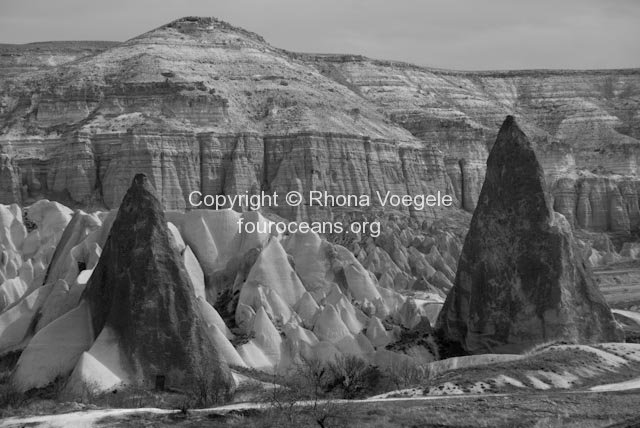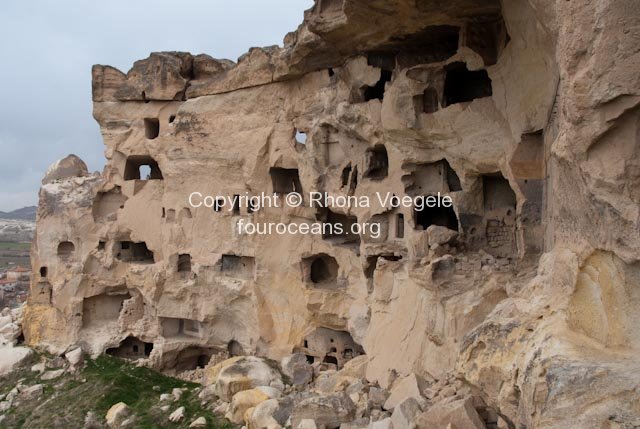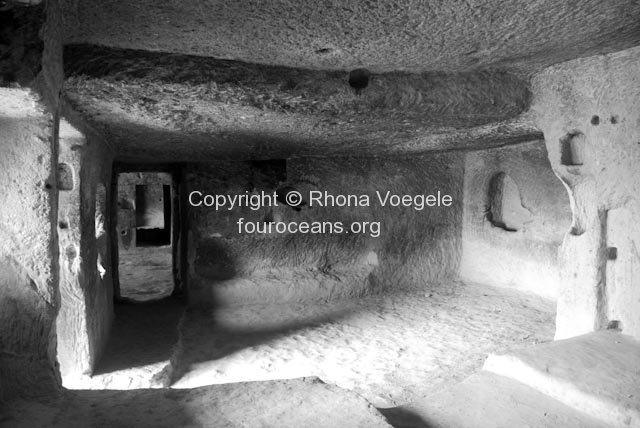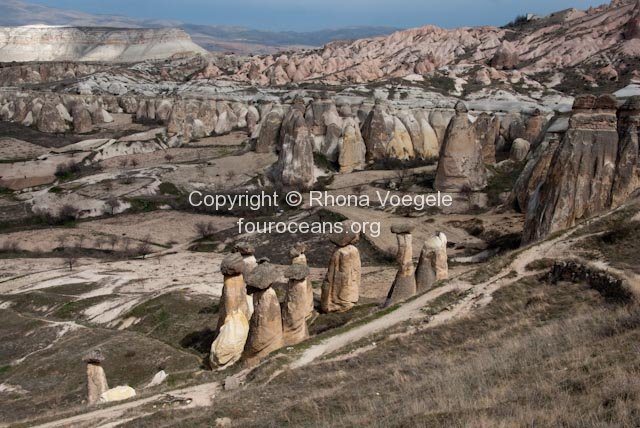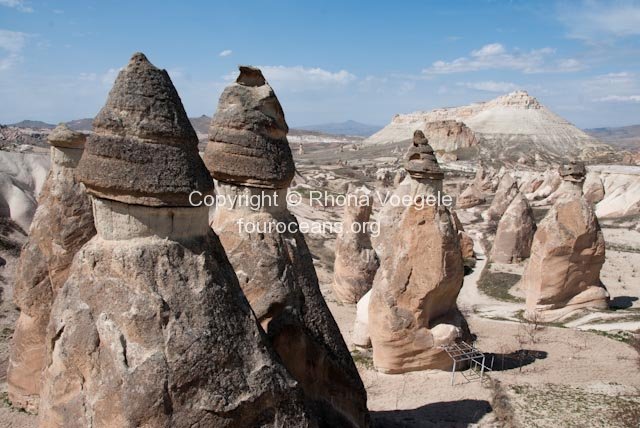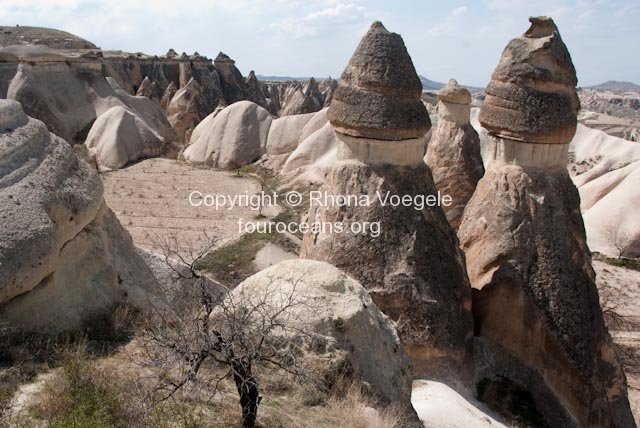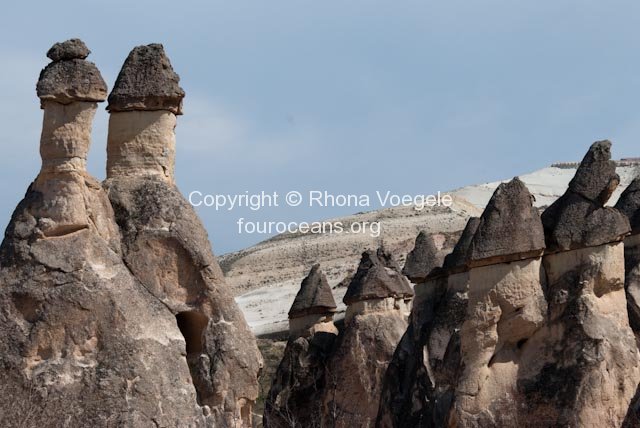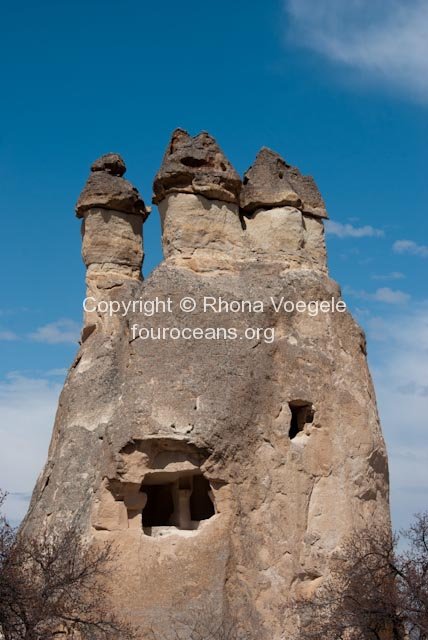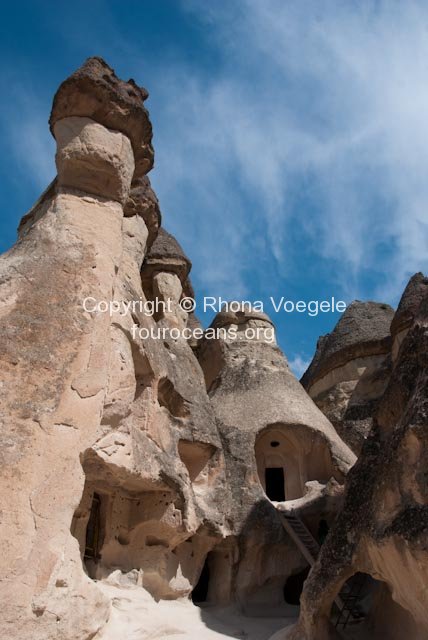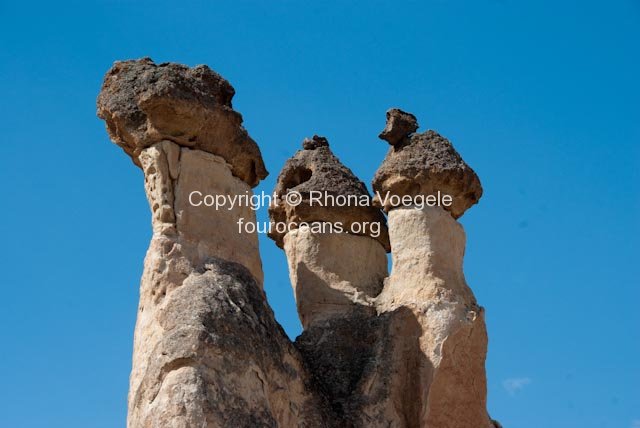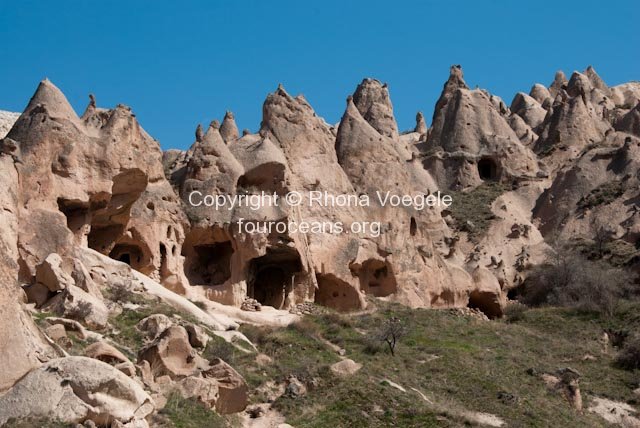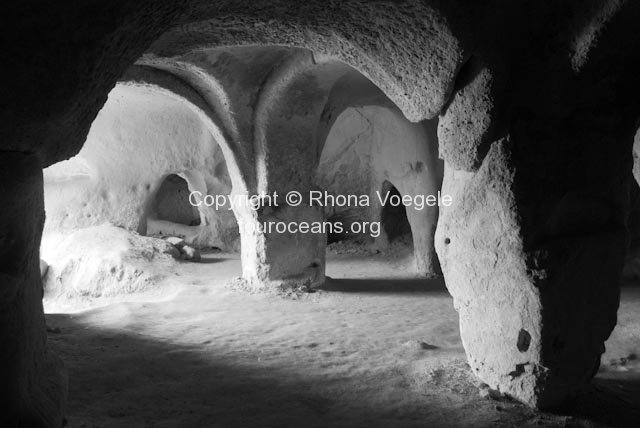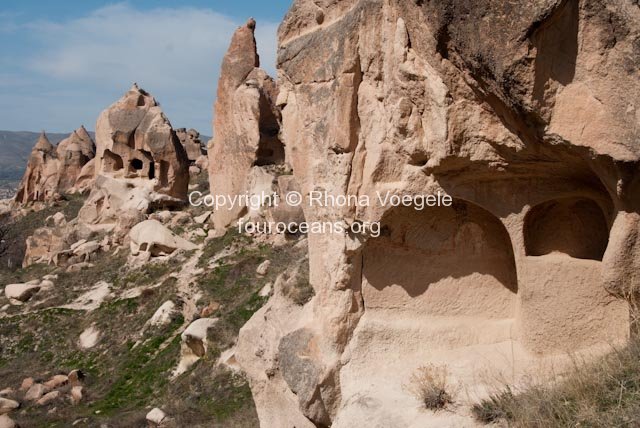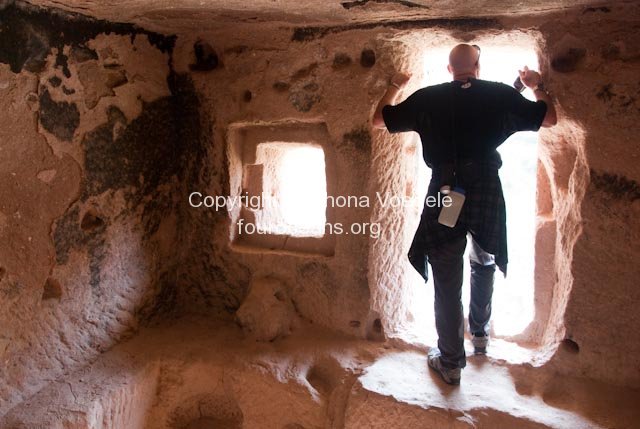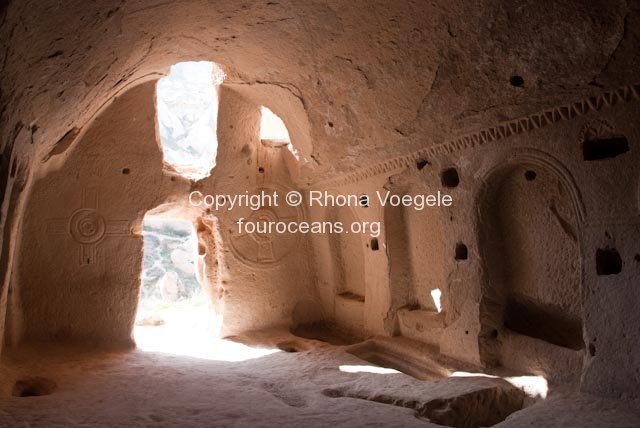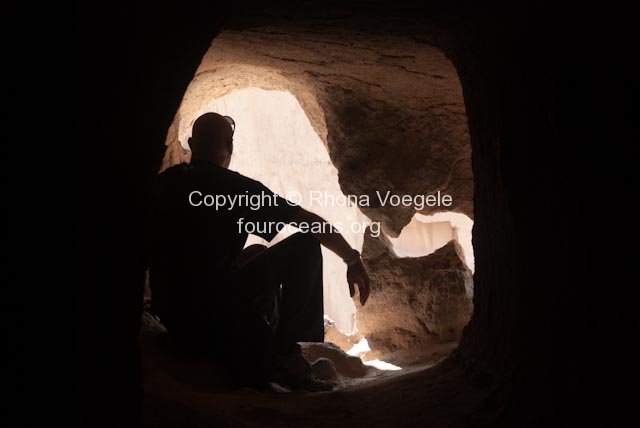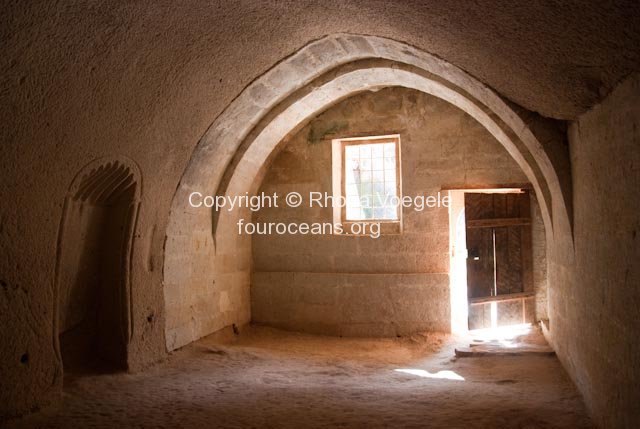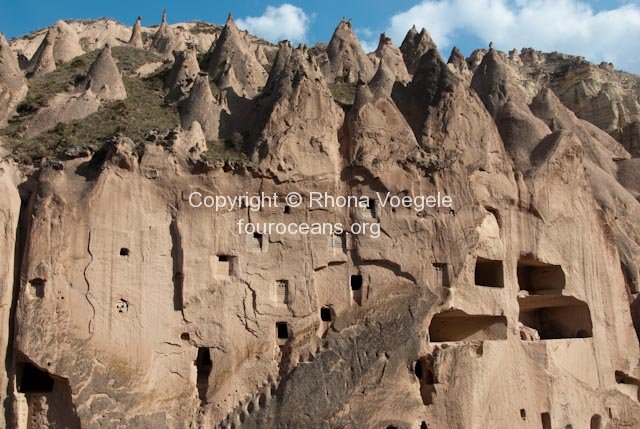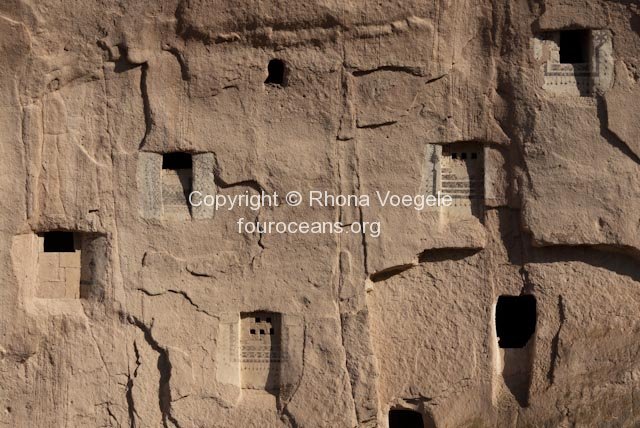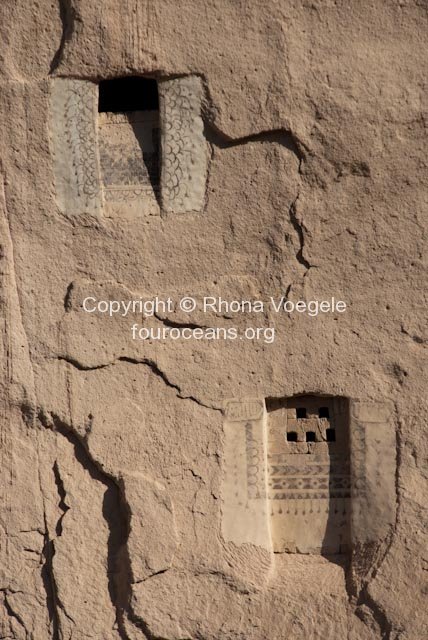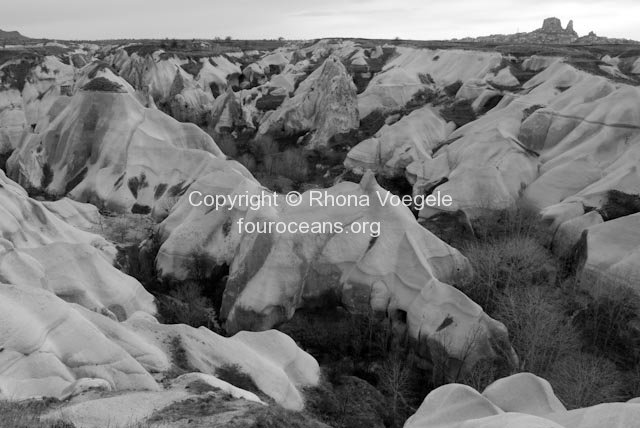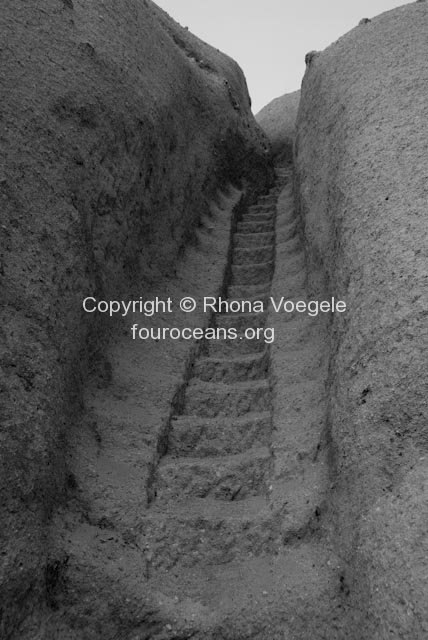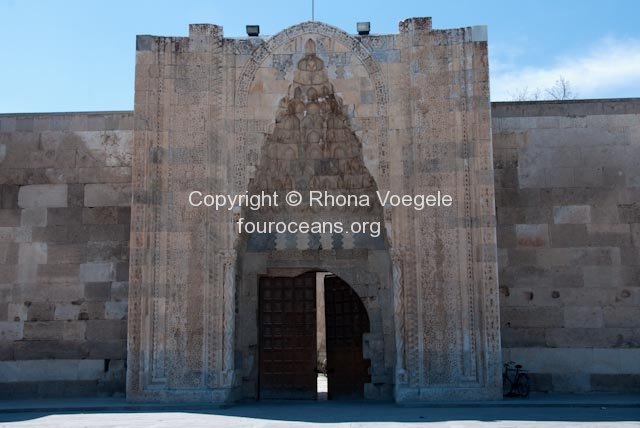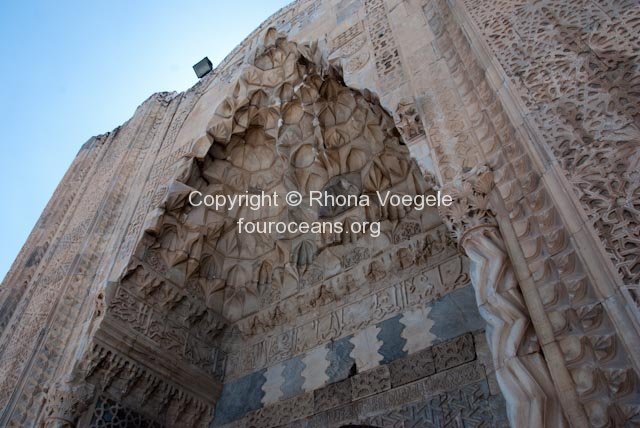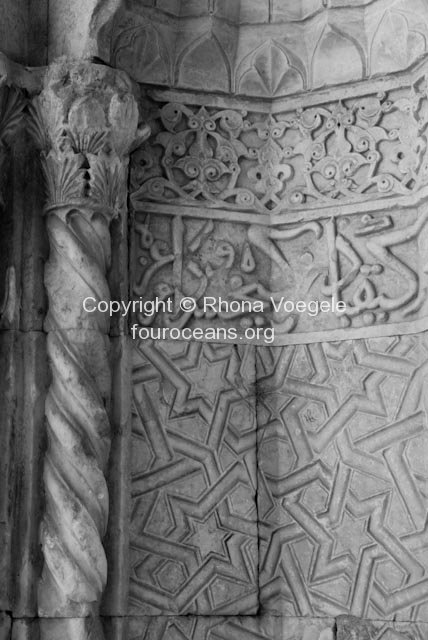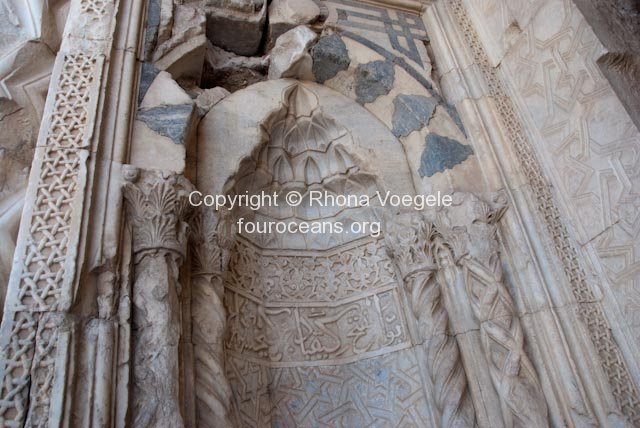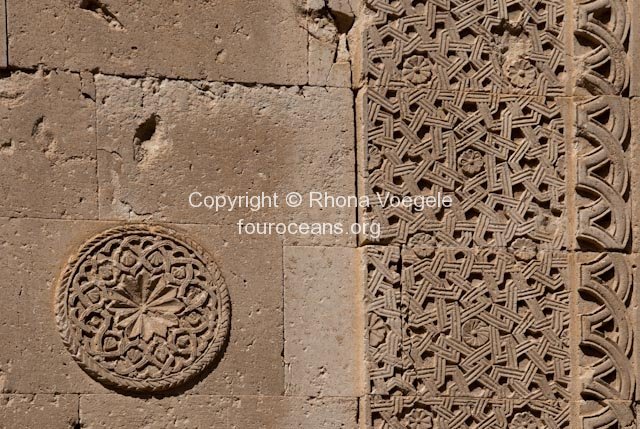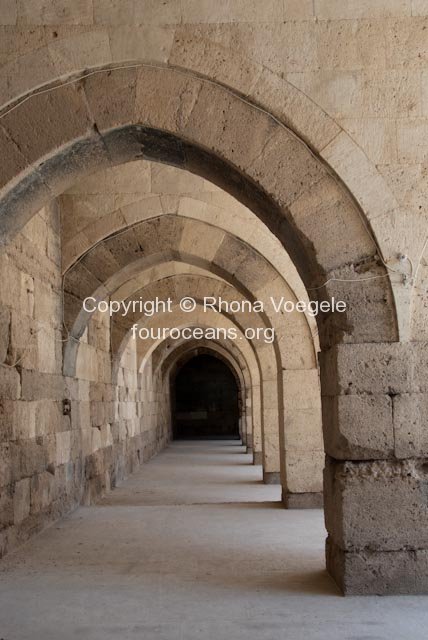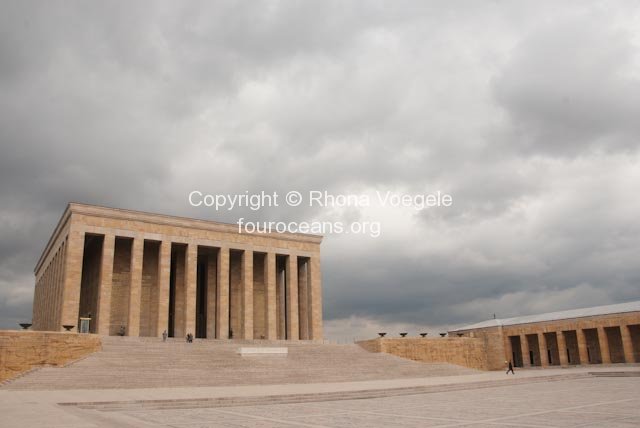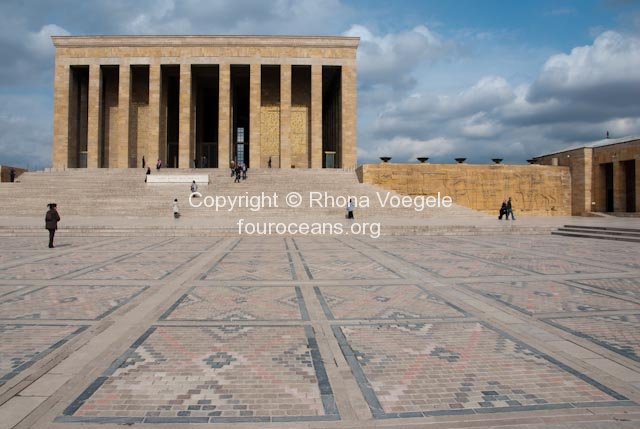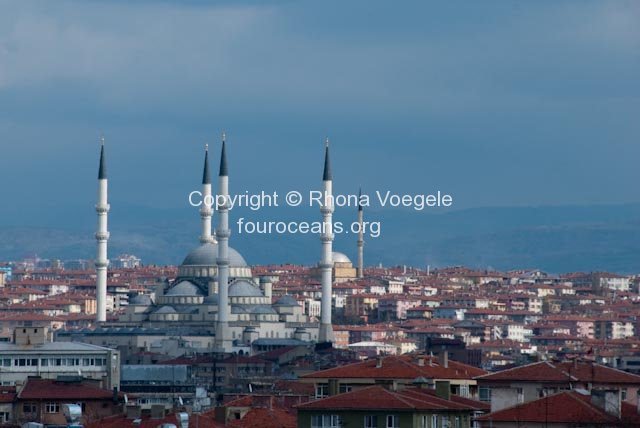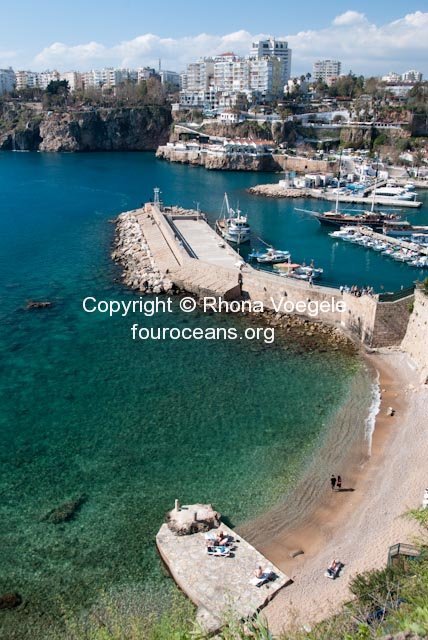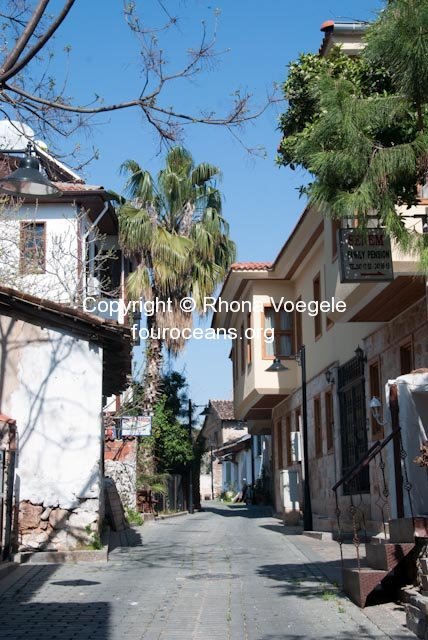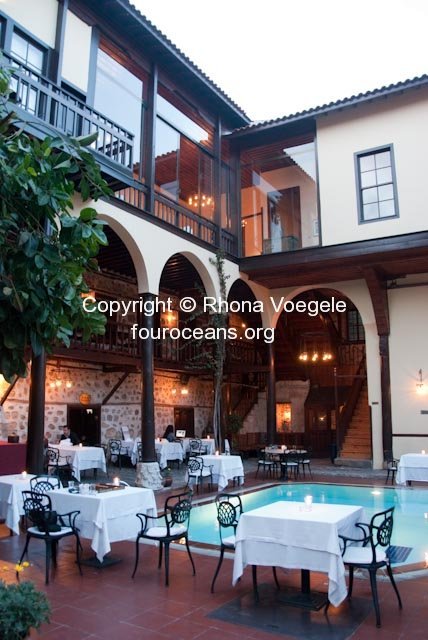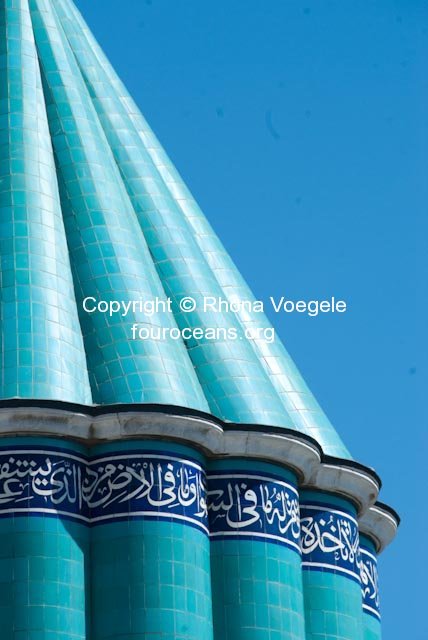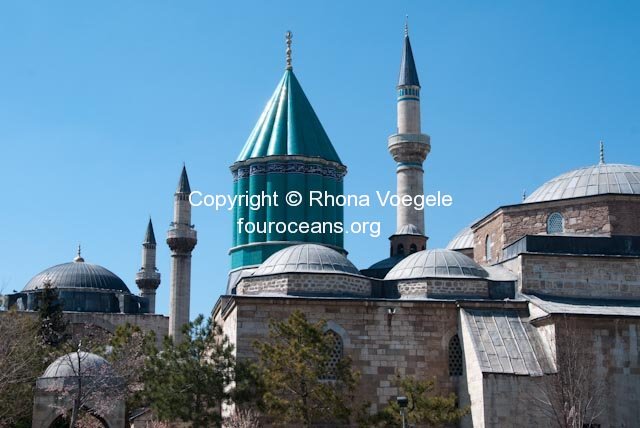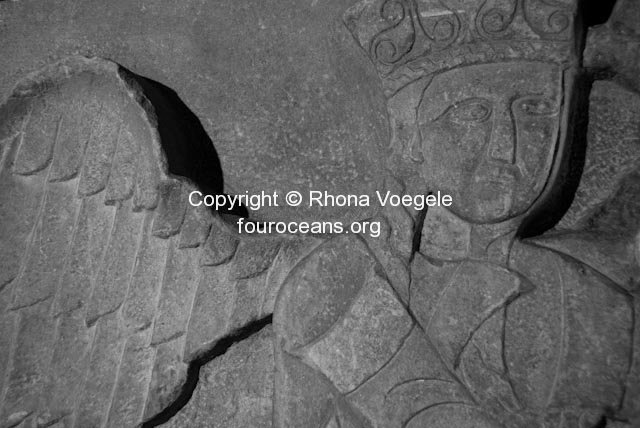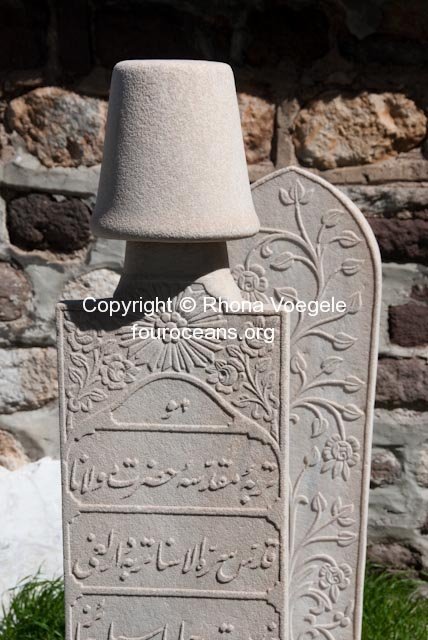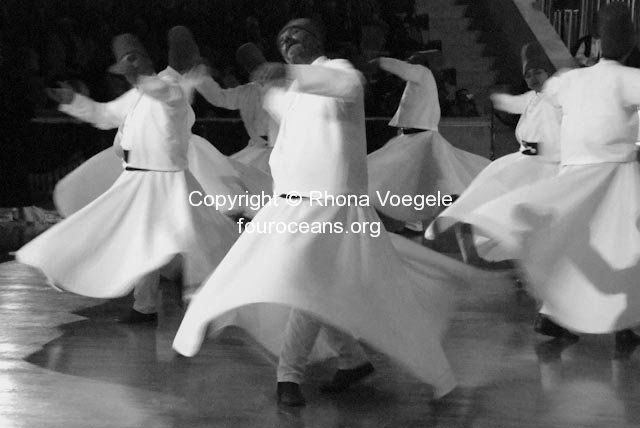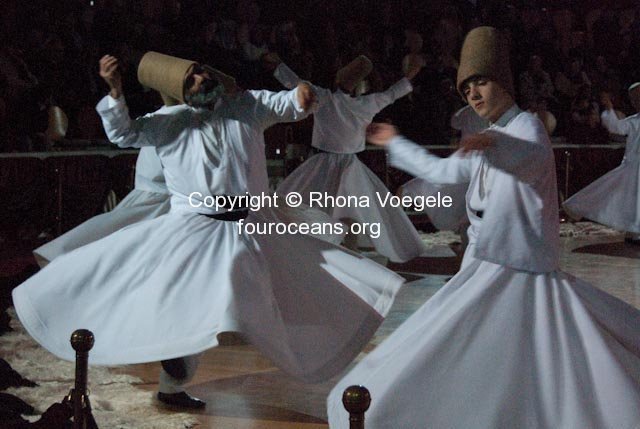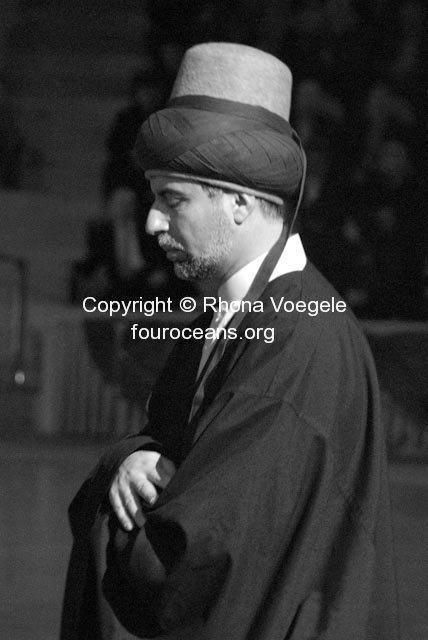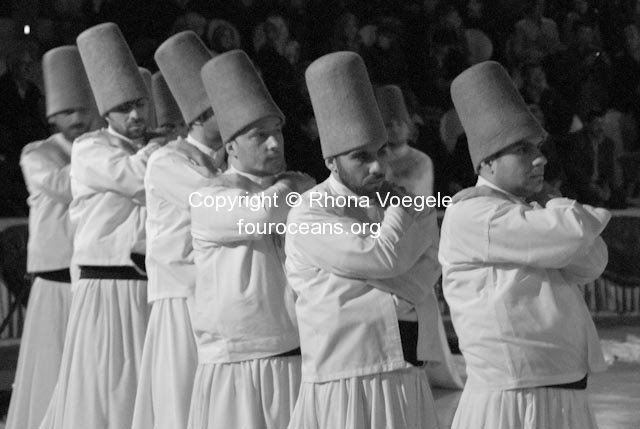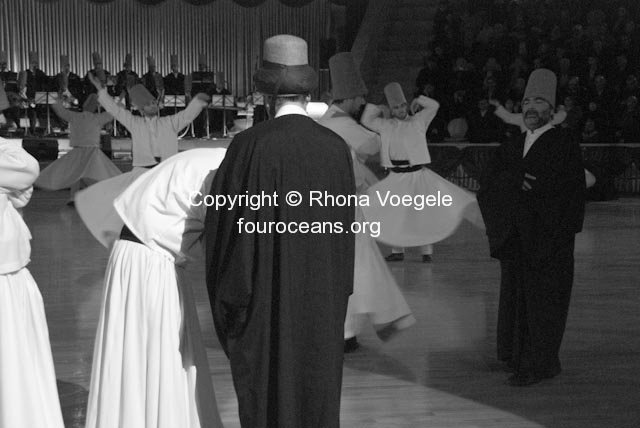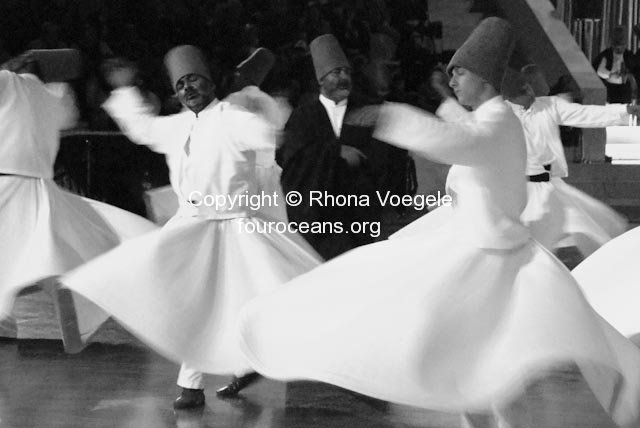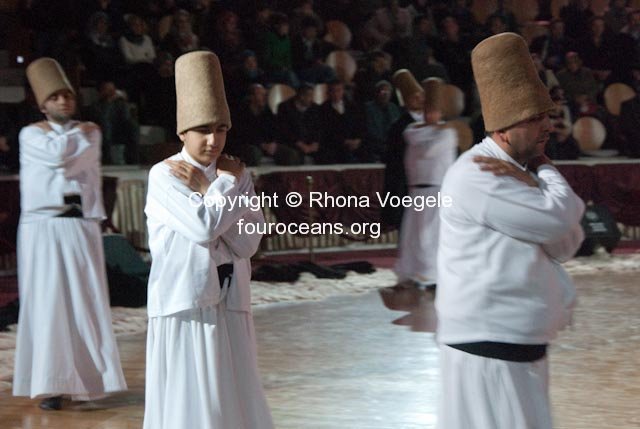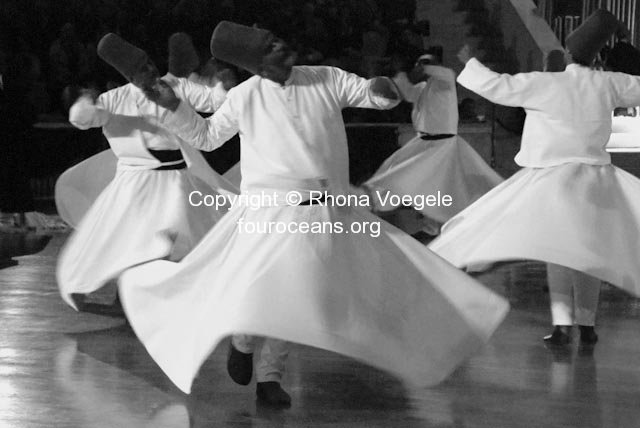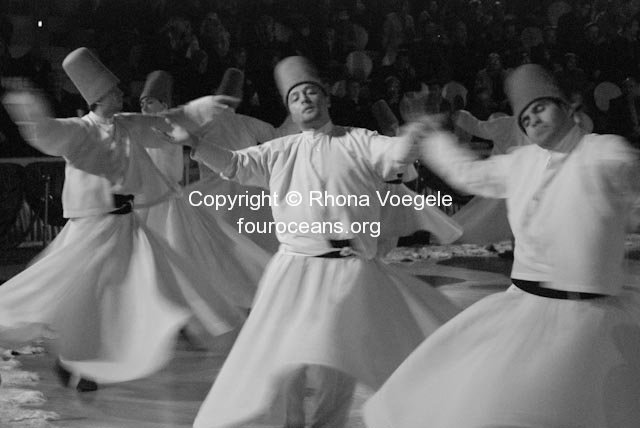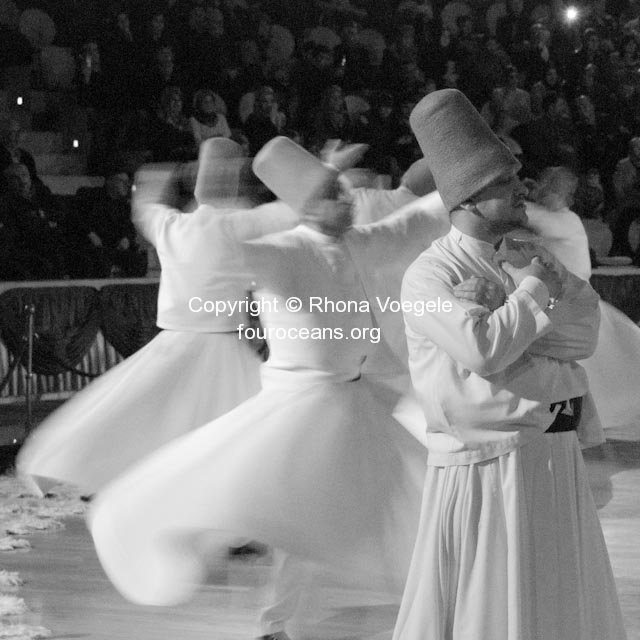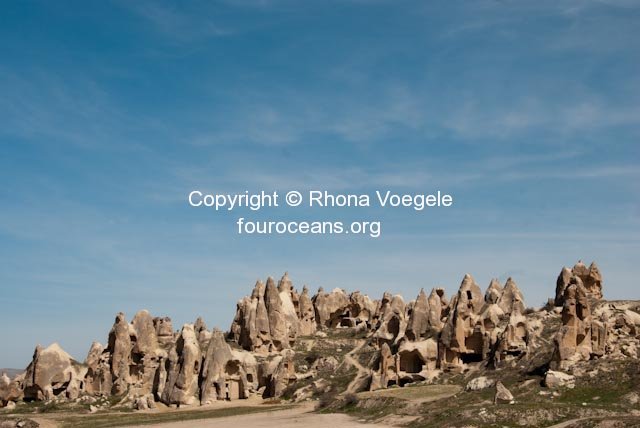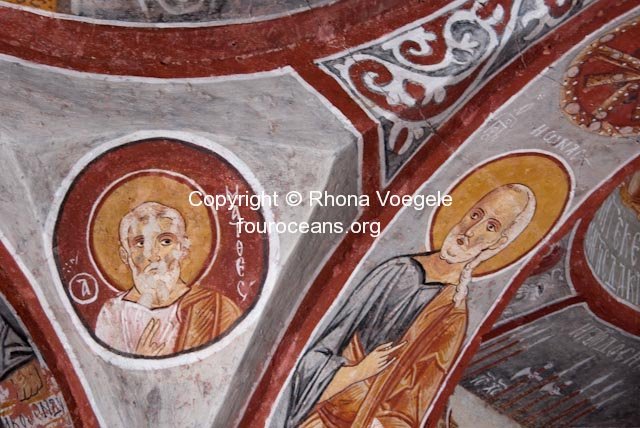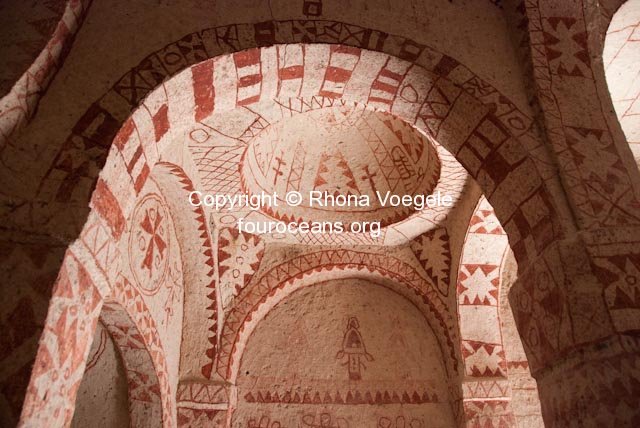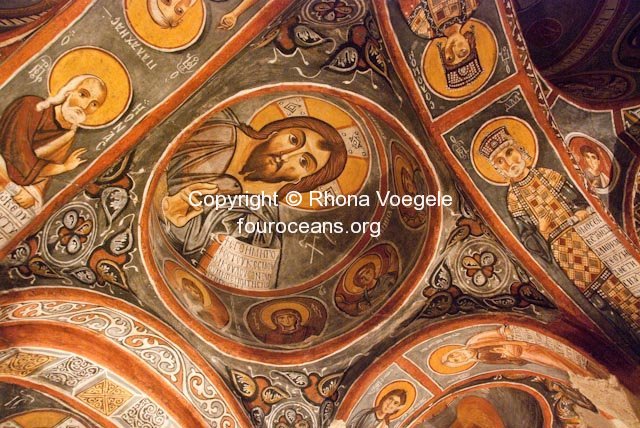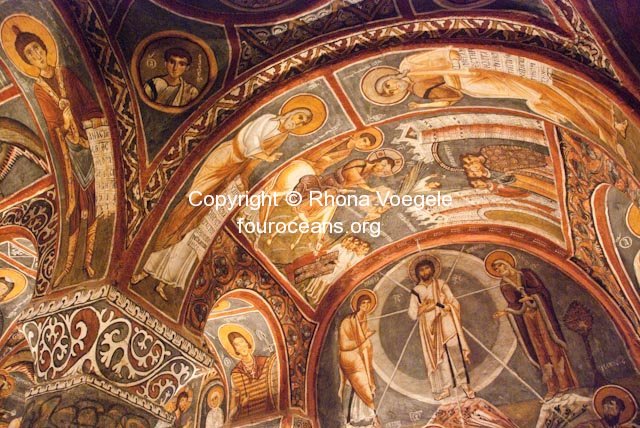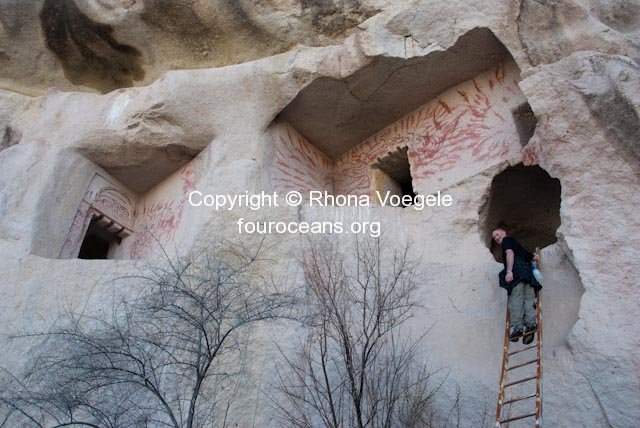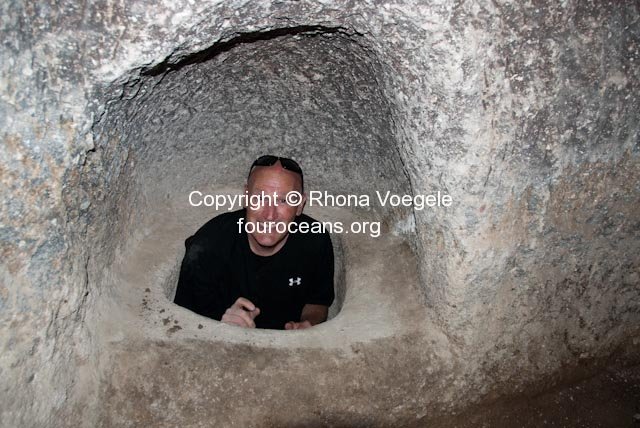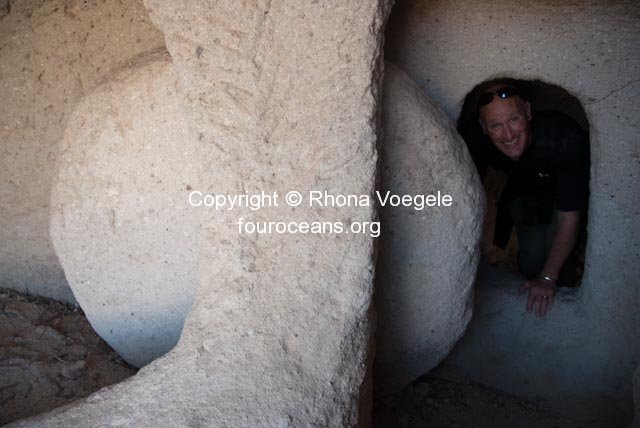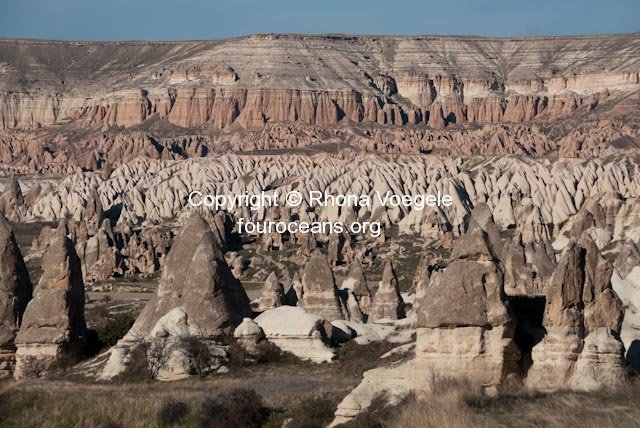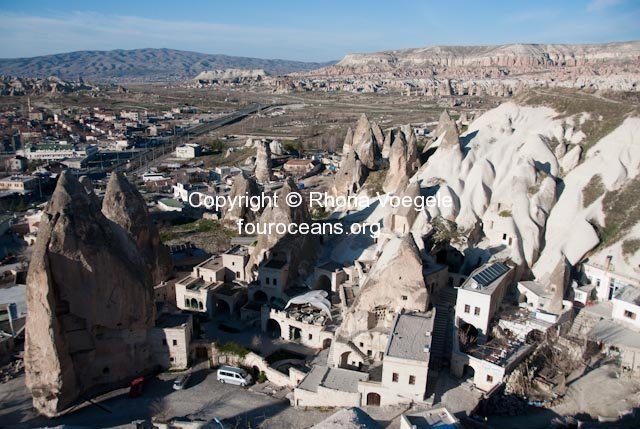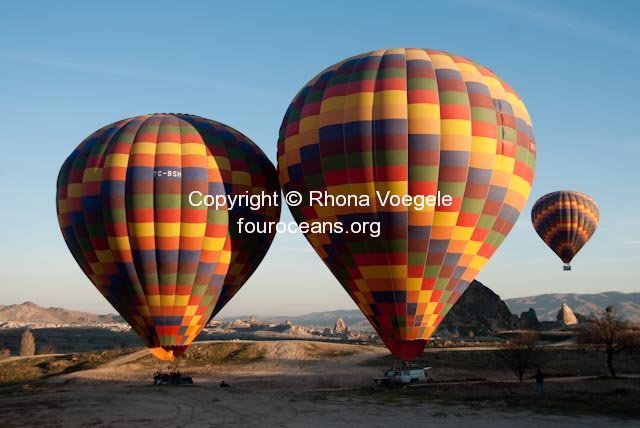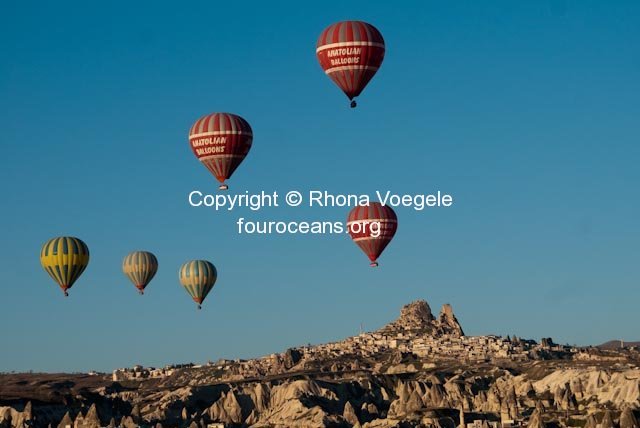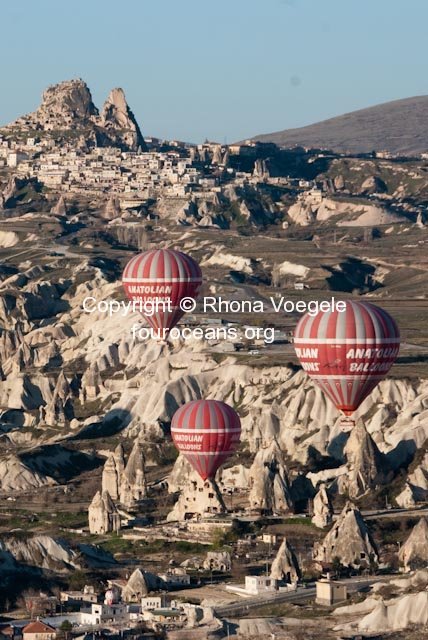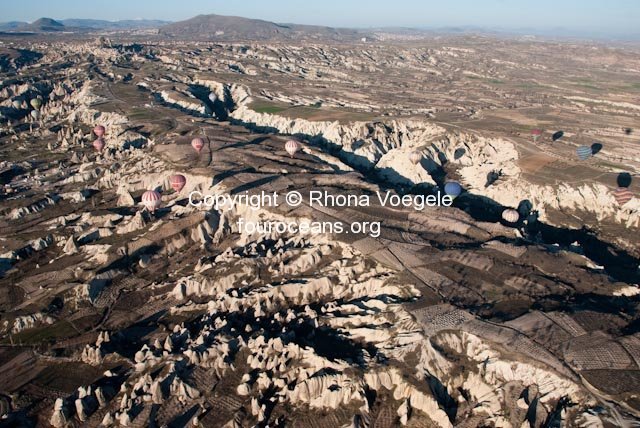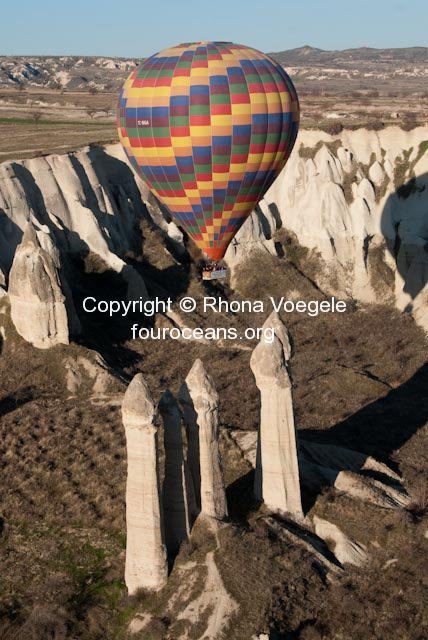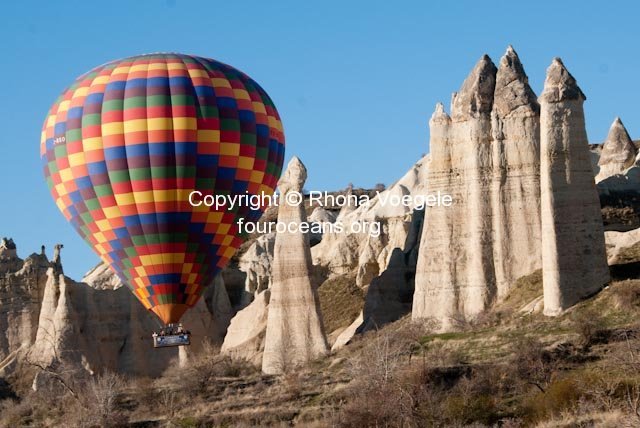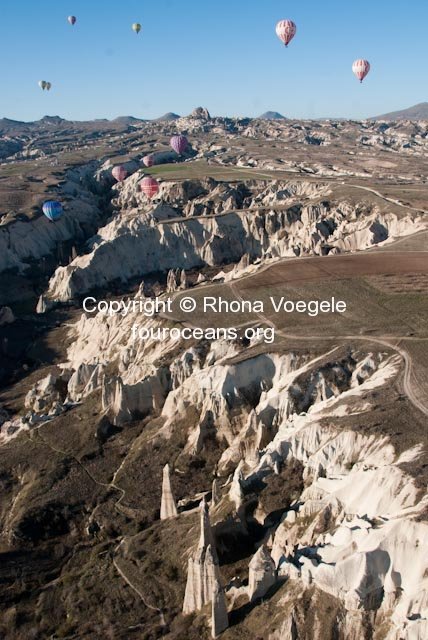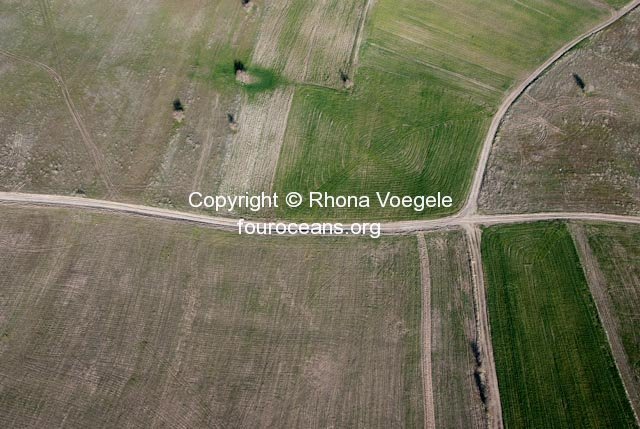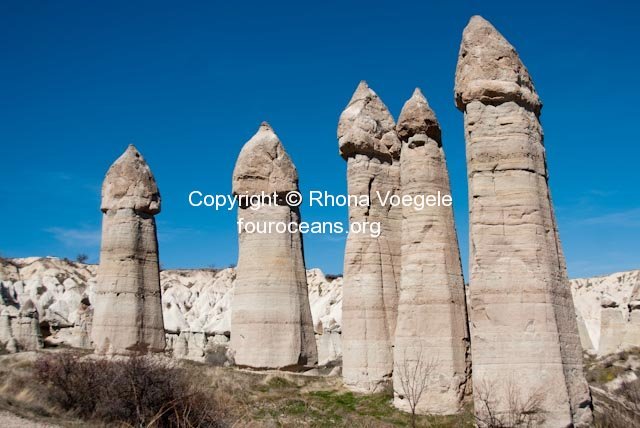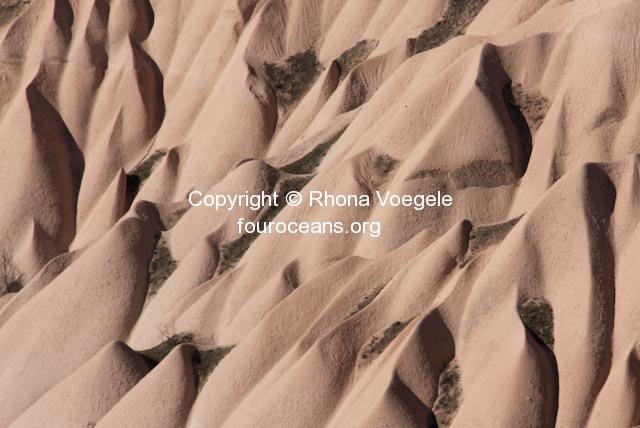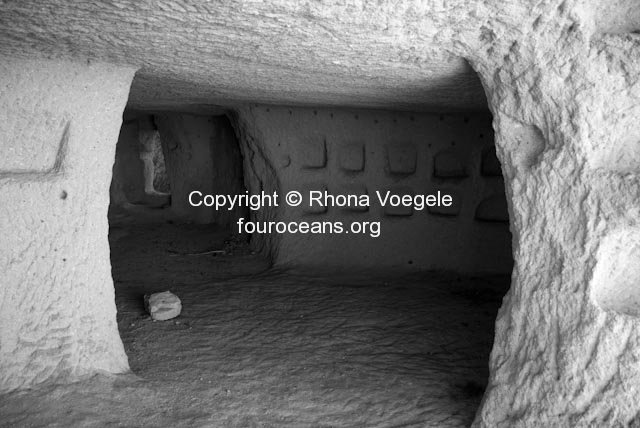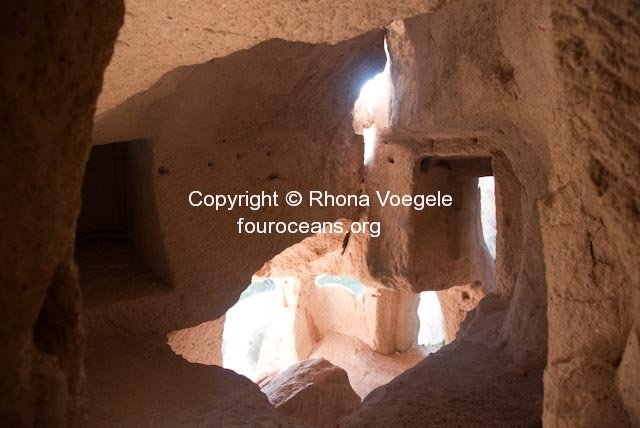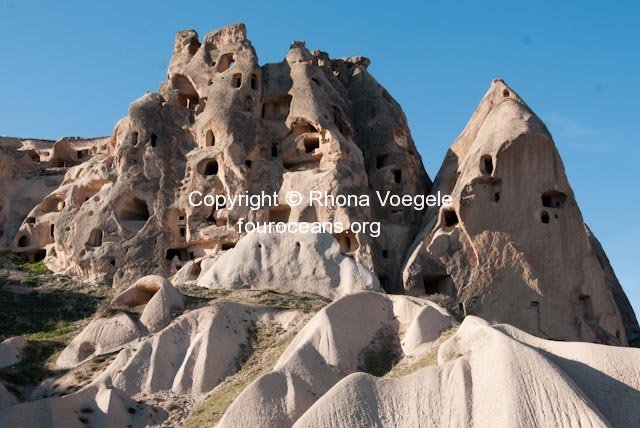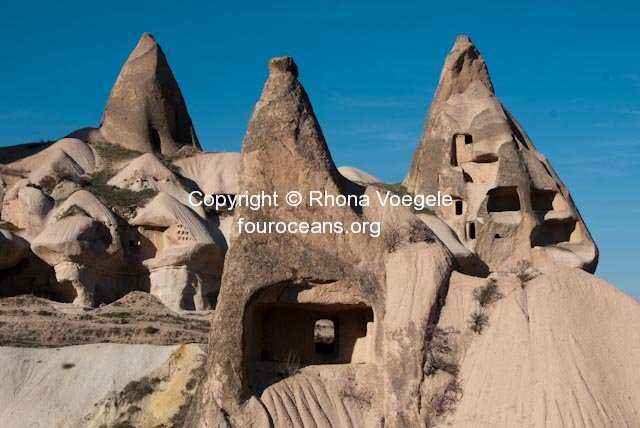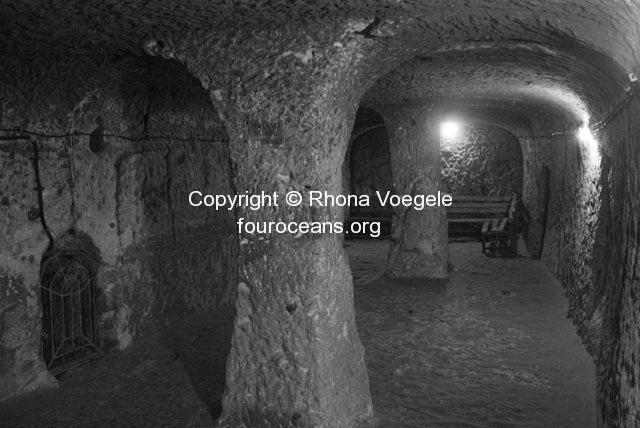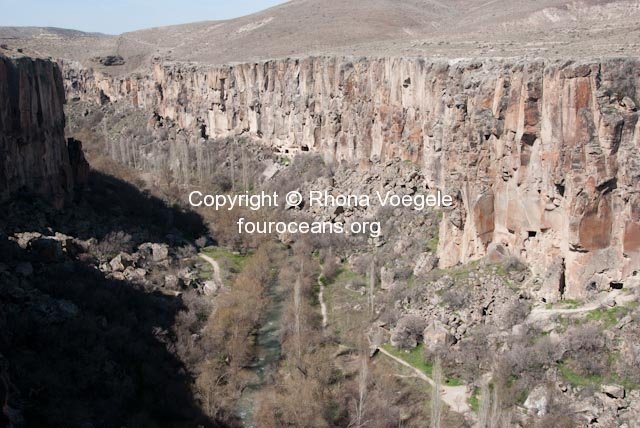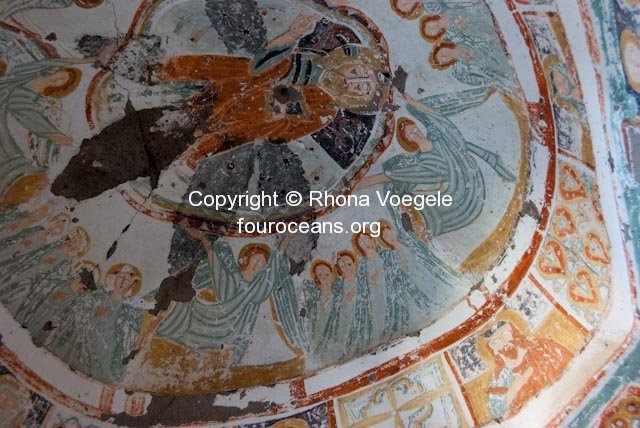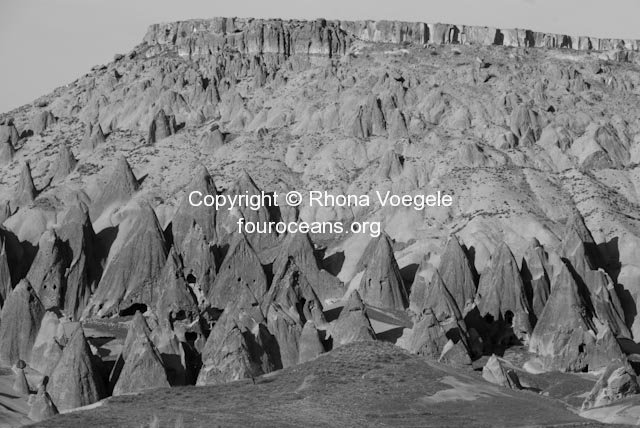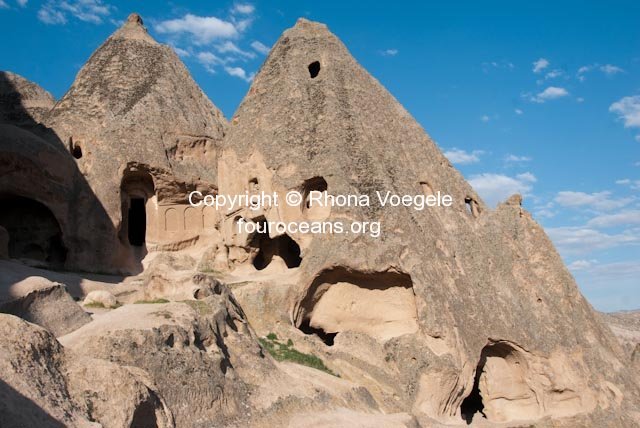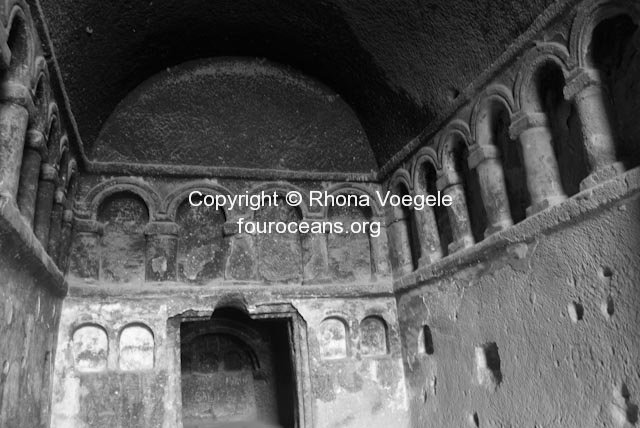–
–
After a very full and exciting week last week we seem to have slowed down a little over the past seven days. Our blue sky weather in Cappadocia finally came to an end, and we’d seen a lot of fairy chimneys by the time we left. On our last full day of exploring we headed to Cavusin, a small village at the base of an impressive honeycombed rock outcrop. We clambered up and got to the Church of St John the Baptist, which dates from the 5th century and is one of the oldest churches in Cappadocia. Access is now assisted by a platform because the structure of the entire outcrop is so eroded that the original route no longer exists. It was impressive. A huge cave carved out of the rock in the shape of a traditional church, complete with columns, wall carvings and the remains of frescoes. We scrambled around the rest of the outcrop, climbing in and out of rooms, peering out of high windows and wondering if a huge cracks in the rock meant the whole thing was going to collapse in the next 5 minutes or the next 5 years.
From there we walked to an area called Pasabag, known for its mushroom-shaped fairy chimneys. The shape is a result of the more solid rock on top being eroded slower than the layers underneath. The image you see on a lot of local postcards is the three-headed fairy chimney. A single chimney splits into three at the top, with each of the small chimneys being topped by a basalt hat. It was cool, but actually some of the nicer scenery was further up the valley where the basalt tops have all but toppled off chimneys that have eroded away to narrow tips. The discs of basalt balance at odd angles, waiting to be jolted off by the next earthquake.
Read the rest of this entry »
Tags: Aksaray, Ankara, Ataturk, Cappadocia, Museum of Anatolian Civilisations, Pasabag, Sultanhani, Zelve
–
–
We wandered around Antalya a little more before heading inland to Konya via some spectacular mountain scenery. Konya is the spiritual home of the Mawlawi Order of Sufi Islam, famous for its sema ceremonies where the dervishes whirl as a form of meditation. Between 1150 and 1300 the city was the capital of the Seljuk Sultanate of Rum, and in 1228 the man who would become one of Turkey’s most beloved poet and religious leader moved to the city with his father. Jalal ad-Din Muhammad Balkhi, otherwise known as Mevlana or Rumi, was a spiritual leader and teacher like his father had been. After his death in 1273 his followers built a mausoleum over his tomb and continued to follow his teachings.
The mausoleum is now a museum and we saw the beautiful decorations that adorn his tomb. He is still held in high regard and many pilgrims come to Konya every year to pay homage. Many of them also go to see a sema ceremony which is held every Saturday. Not knowing if we’d be able to see one in Konya we’d already seen one in Istanbul but went again. It was a completely different experience, though strangely enough the touristy expensive one in Istanbul was actually more intimate. In Konya they whirled in a 2,000 person stadium and free tickets meant it was almost full. Camera flashes were going off regularly despite a request not to use them. Still, it was good in a different way and I appreciated the chance to take photos even if the results are somewhat fuzzy and grainy.
Read the rest of this entry »
Tags: Antalya, Cappadocia, Derinkuyu Underground City, Goreme Open Air Museum, hot air balloon, Ilhara Valley, Konya, Love Valley, Mevlana, Selime Monastery, Uchisar, whirling dervishes
